It’s not easy to create an inclusive book collection. Whether you’re a librarian creating a collection for an entire community, a teacher creating a collection for your classroom, or a parent creating a collection for your children, choosing books that reflect the diversity of human experience can be a challenging job.
That’s because creating a diverse book collection is about more than just making sure X, Y, and Z are represented. It’s not a matter of ticking off check boxes or making sure quotas are filled. For those committed to doing it right, building a diverse book collection requires contemplation, research, and awareness. But the rewards are great: a truly diverse collection of books can turn children into lifelong readers and promote empathy, understanding, and self-confidence.
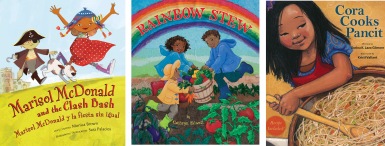
To make things a little easier, we’ve created a checklist to help.
Here are eight steps to all-inclusive reading:
- Does your book list or collection include books with characters of color? LGBTQ? Differently-abled?
- Does it include books with a main character of color? LGBTQ? Differently-abled?
- Does it include books written or illustrated by a person of color? Of different nationalities, religions or sexual preference?
- Are there any books with a person of color on the cover? Do the characters on the book covers accurately reflect the characters in the book?
- Think about your student population. Does your list provide a mix of “mirror” books and “window” books for your students—books in which they can see themselves reflected and books in which they can learn about others?
- Think about the subject matter of your diverse books. Do all your books featuring black characters focus on slavery? Do all your books about Latino characters focus on immigration? Are all your LGBTQ books coming out stories?
- Do you have any books featuring diverse characters that are not primarily about race or prejudice?
- Consider your classic books, both fiction and nonfiction. Do any contain hurtful racial or ethnic stereotypes , or images (e.g. Little House on the Prairie or The Indian in the Cupboard)? If so, how will you address those stereotypes with students? Have you included another book that provides a more accurate depiction of the same culture?
If the answer to any of these questions is no, here are some resources that can help:
Where can I find great diverse children’s books? A resource list
Beyond Good Intentions: Selecting Multicultural Literature
Seven Ways to Explore Race in the Classroom
How inclusive is my classroom library? A Toolkit
Disability in KidLit
I’m Here, I’m Queer, What the Hell Do I Read?
American Indians in Children’s Literature
Diversity in YA
What questions would you add? What resources would you recommend? As always, leave ‘em in the comments!
Filed under:
Diversity, Race, and Representation,
Educator Resources Tagged:
checklist,
diverse books,
diversity in the classroom,
promoting diversity,
resources 

Today’s world is smaller than ever, and as technology continues to advance it will only get smaller. Raising students for success means teaching them how to be global citizens, emphasizing cultural literacy and geoliteracy, and exposing them to people whose lives differ from theirs.
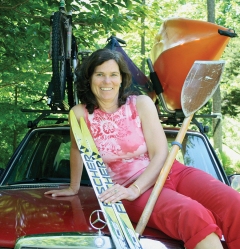
For this, there’s no better author than Jan Reynolds. Reynolds is a writer, photographer, and adventurer who has written over fourteen nonfiction books for children about her travels. Her work has appeared in numerous publications including National Geographic, The New York Times, and Outside Magazine. Reynolds is an avid skier, mountain climber, and adventurer who holds the record for women’s high altitude skiing, was part of the first expedition to circumnavigate Mount Everest, and performed a solo crossing of the Himalayas.
Throughout April, we’ll be exploring how Jan’s books can be used in the classroom to teach about the environment, geoliteracy, global citizenship, and nonfiction. Today, we wanted to share Jan’s books and some of our favorite resources available to help teach them:
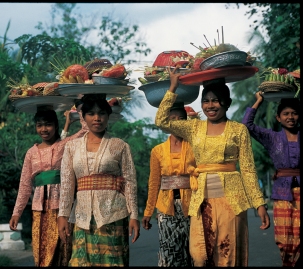
image from Cycle of Rice, Cycle of Life
Jan’s Books:
Vanishing Cultures: Sahara (North Africa)
Vanishing Cultures: Mongolia (Mongolia)
Vanishing Cultures: Himalaya (Nepal/Tibet)
Vanishing Cultures: Frozen Land (Northwest Territories, Canada)
Vanishing Cultures: Far North (Arctic Circle, Northern Europe)
Vanishing Cultures: Amazon Basin (Amazon Basin, South America)
Vanishing Cultures: Down Under (Australia)
Celebrate! Connections Among Cultures
Cycle of Rice, Cycle of Life: A Story of Sustainable Farming (Bali)
Only the Mountains Do Not Move: A Maasai Story of Culture and Conservation (Kenya and Tanzania)

image from Vanishing Cultures: Far North
Lesson Plans and Classroom Guides:
Classroom Guide for Vanishing Cultures series (including classroom guides for individual books)
Classroom Guide for Only the Mountains Do Not Move
Classroom Guide for Cycle of Rice, Cycle of Life
Classroom Guide for Celebrate! Connections Among Cultures
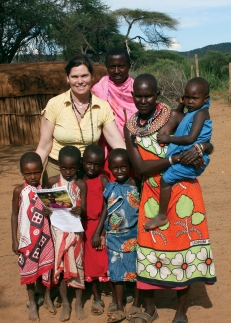
Jan Reynolds with Maasai family while working on Only the Mountains Do Not Move
Interviews with Jan Reynolds:
Jan Reynolds on Cultural Anthropology and Photography (Only the Mountains Do Not Move)
Talking about Sustainability with Jan Reynolds (Cycle of Rice, Cycle of Life)
Interview with Jan Reynolds on Celebrate! Connections Among Cultures
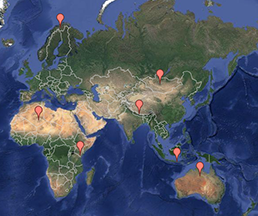
map of some of the places explored in Jan Reynolds’ Vanishing Cultures series
Video:
Jan! From Here to There
Maasai Life with Anthropologist Terry Mcabe
Life in the Wild: Visit a Maasai Tribe in Kenya
Explore Rice Farming on the Island of Bali: Parts I, II, and III
Author Visits:
Jan Reynolds visits schools around the world to share her books and experiences, and also does virtual Skype visits. For more information on her school visits or virtual visits, visit her website or contact us at [email protected].
Visit our Author Study Pinterest Page for more great activities and resources related to Jan’s books, and stay tuned throughout April as we delve deeper into the books of Jan Reynolds and explore how they can be used to teach global citizenship, environmental stewardship, geoliteracy, and more.
Filed under:
Curriculum Corner Tagged:
CCSS,
diversity in the classroom,
environmentalism,
geoliteracy,
global citizenship,
informational text,
Jan Reynolds,
nonfiction,
teaching resources 

There’s been a lot of press lately about anti-bullying legislation and school policies. For good reason considering that statistics reflect that each day 160,000 students miss school because they’re afraid of being bullied and that every seven minutes a child is bullied – with adult intervention happening 4% of the time, peer intervention 11% of [...]









I have always loved Children’s Book Press and Lee and Low! Barefoot Books is another wonderful publisher focusing on folktales from people all over the globe! As the mother of a little guy with a genetic syndrome and physical disability, it is so lovely to have books featuring kids wearing leg braces, using wheelchairs, and a story about a little boy who is a bit different written by a woman whose brother has autism. This small, independent publisher has been publishing beautiful books for twenty years and should definitely be on your go-to list for your home or classroom library!